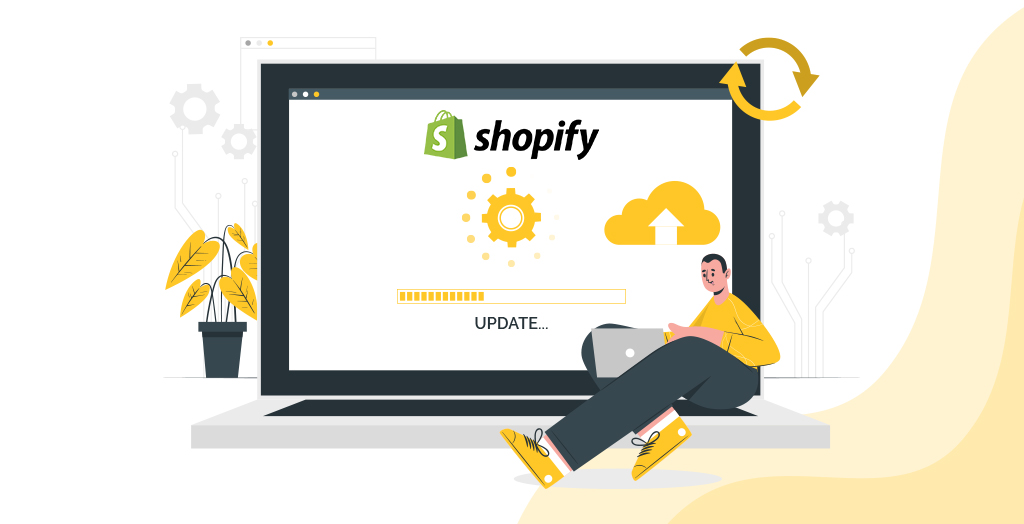Table of Contents
“In order to be irreplaceable one must always be different.” – Coco Chanel (Founder of Brand Chanel)
This is true for the websites in a way. If the brand wants to get noticed, its website should be unique, speaking of its brand value. People tend to remember what is rare and unique and forget the common. Shopify somewhere lacked to deliver uniqueness to the brands due to limited themes- perhaps the biggest and most talked-about shortcoming which was restraining many of the brands from using it.
However, Shopify got your back.
In its latest virtual event, Shopify Unite 2021, Shopify announced one of its biggest updates- Online Store 2.0.
With Online Store 2.0, which is considered as a rebuild of the Liquid- the template language of Shopify, you get the opportunity to develop customized themes and apps through the new set of developer tools, for your brand. The biggest highlight of the event was the announcement of its first-ever source available theme- Dawn.
Dawn is a theme built with semantic markup with HTML and CSS, that majorly focuses on speed and flexibility. In fact, Shopify claims it to be 35% faster than the currently most popular theme among the merchants- Debut. So, no more dependency on external libraries to create an exceptional user experience, Dawn is there for you.
Thrilled, Already?
But this is just the leading edge in the whole new wave of changes, there is still much more to discover, let’s dig deeper for more insights.
4 Revolutionary Features of Online Store 2.0
-
1. More Flexible Theme Architecture
In the latest Shopify update Online Store 2.0, Shopify has made a huge change to its theme architecture, by introducing sections on all the pages, making it more customizable and flexible.
With this added facility, the developers, who earlier had to make several code edits and elaborate workarounds with blocks in order to add a similar effect as the Home page on all the pages of the Shopify website, can now do it at utter ease.

- Source: Shopify
Now you can add sections to all your web pages, and make them similar to your Home page. In fact, you can customize every part of your website the way you like. This not only gave a creative edge to the developers but also merchants with no technical aptitude.
-
2. Simplified Meta field
Shopify has relieved the developers to struggle with the hardcode and API to add meta fields on their product page. You can simply create and save the meta fields from the use of dynamic sources present in the theme editor. With a more flexible type system, standard meta fields, added file picker, and presentation hints, you can add anything, like space to add product size charts, or media files easily and efficiently.
-
3. Tree View of the Page Content in the Sidebar
The new theme editor also came up with a tree view feature, which displays all the content of the web page in the sidebar, making it easier for the developer to navigate through the pages.

- Source: Shopify
With this feature, you need not drill down the various sections of the website to make changes to a particular page or add a subpage. You can select the page directly from the sidebar, start making the changes and save your time. The tree view also helps you to rearrange the page order by simply dragging and dropping.
-
4. Advanced Developer Tools
Shopify also introduced a suite of advanced developer tools, including Shopify GitHub integration, an updated Shopify CLI tool, and Theme Check. The tools integrate into the Shopify platform and simplify the app and theme development process.
Integration with Github makes it easier for the developer to track and manage the changes, allowing them to push and pull the changes directly through the synchronized GitHub repository.
The updated Shopify CLI tool is no longer limited to the Node.js and Ruby on Rails apps and app extensions, but now it allows you to develop themes as well. And lastly, the Theme Check, the most important thing to deliver uninterrupted service to the user, scans the theme against errors and failures.
Bonus: Shopify Theme Store Reopens with New Revenue Guidelines
Shopify also announced new revenue guidelines regarding Shopify Theme Store, which is opening from July 15, 2021. As per the guidelines, from September 2021, Shopify will not be charging any revenue share on the first million US dollars made from the Shopify themes every year.
Once your revenue will cross this amount, you will have to pay 15% of the revenue share on the difference amount. To submit a theme on the Shopify Theme Store, you need to pay a submission fee of 99 USD plus 2.9 % processing fees per transaction.
Wake up Before the Year Ends!
The new updated Online Store 2.0 can bring a huge difference in your customer experience as well as business. Hence, by now you might have made up your mind to migrate to the new infrastructure and boost your business profit.
But, with so much good news, there has to be one bad one attached.
The developers need to migrate all their apps and themes to the latest requirements of Online Store 2.0 by the end of the year 2021, in order to keep their store functioning. So, if you are looking for Shopify App Development or Shopify Theme development services to upgrade your eCommerce store, hire our Shopify Development team.
We provide end-to-end Shopify Mobile App Development Services. Our team will not only help you to migrate your store to the latest Shopify version but also upgrade your store with the latest designed themes or create a customized one that conforms to your unique business requirements.

























